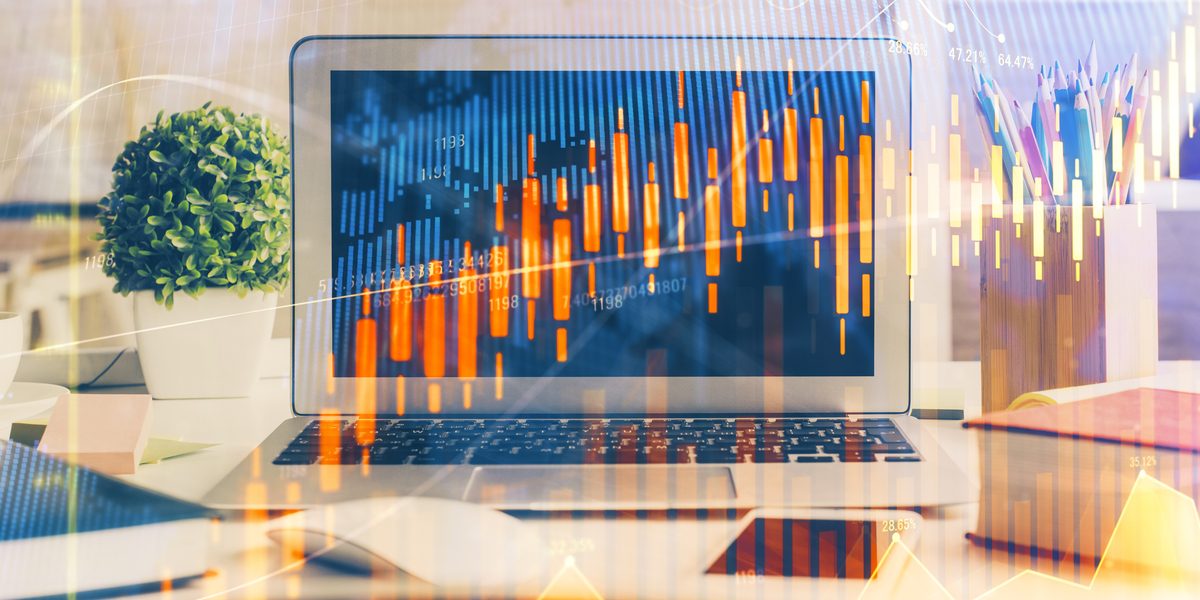- Solar Run >
- Solar Guide >
- Solar power monitoring systems: not just for geeks

What’s monitored, is measured. When you think about it, this saying is only too true. Your bank balance, your child’s progress at school, your health… and so the list goes on.
If you’re in touch with what’s happening, you can find areas for improvement and identify issues before they spiral out of control.
These exact same principles apply to your solar power system.
The thing is, most of us don’t relish the idea of wading through masses of hard-to-understand data. So many so-called solar power monitoring systems have been designed with absolutely no thought of the typical layperson. They assume we’ve got an engineering degree and heaps of time to spend pouring over incredibly boring dashboards, wading through voluminous graphs in an attempt to cobble together some actionable data.
Problem is, most solar manufacturing companies aren’t software companies.
The good news is that, in recent years, this situation has changed. There are now some much better third-party solar monitoring systems on the market that don’t assume you are a data geek. And the best of the bunch comes from an Australian software company, Solar Analytics (more on this later… read on!).
A solar monitoring system helps you monitor the performance of your solar system. The ultimate goal of any solar power monitoring system worth its salt is to:
Solar power monitoring systems utilize the data from your solar inverter and present that data to you via a software dashboard you can view on your laptop or mobile phone.

All new solar inverters these days come with their own proprietary built-in solar power monitoring. With some notable exceptions like SolarEdge, most are pretty basic – only showing how much solar energy your system has produced. A handful go a bit further, providing data on how much solar you are exporting to the grid for example.
Aside from limited functionality, most of these monitoring systems have a graphical user-interface that leaves a lot to be desired. But a far bigger drawback is that – whilst they may send you an SMS or email alert if your system trips off – virtually none will alert you to system underperformance issues.
Solar inverters older than five or six years may not even have built-in solar power monitoring and probably won’t be able to connect to Wi-Fi. You may be able to get some insight on your solar production data via the inverter’s LED screen or on a computer via an ethernet port. The problem with the LED screen check-method is that it requires you – the system owner – to remember to go check the inverter display on a regular basis. Something that’s easy to forget.
The consequences of forgetting to pop out and check if your solar inverter is working correctly can be huge. For instance, you get your quarterly electricity bill and wonder why on earth it’s suddenly gone through the roof. The penny drops – your solar system has stopped working!
To put some numbers around this scenario, a typical Aussie home with a 10kW solar power system will be saving around $500 a quarter off their electricity bill. Imagine if you don’t spot there’s a problem with your solar power system and it goes undetected for a few months – you could be down hundreds of dollars!
That’s where one of the best solar power monitoring systems like Solar Analytics can help you out – and ensure that you never again get electricity bill shock!
If you opt for one of the best solar monitoring systems on the market, it will most likely be a third-party software system – designed by a specialist software company – that can you add on to your existing solar power system.
It should enable you to track:
The solar energy production will show you how much solar electricity your solar power system is producing in kilowatt hours. It will show real-time solar production data, as well as historical data for any time period you select. This is useful if you want to compare previous readings with the current period to see if there’s significant variation in solar energy production. You’ll find that all solar inverters will have built-in production monitoring.
Solar energy consumption is one of the most important stats you need to track – and this is where buying an advanced solar monitoring system really pays off.
What is solar energy consumption? The concept is simple – solar energy consumption is the amount of solar electricity (expressed in kilowatt hours) that you use in your home.
Why is it so important to track? Because by maximizing the amount of the solar you use in your home – to run your lights, dishwasher etc – you minimise the amount of expensive grid power you need to buy. This is where the biggest solar savings are to be had (and you won’t see this as a solar credit on your electricity bill, contrary to popular belief, as it is a cost you haven’t incurred).
It’s important to realise that when solar power is produced, your solar system will try to use it to satisfy any power requirements in your home BEFORE exporting it to the grid. This is a real-time process. So, when the sun’s shining, your solar panels are producing power. At that exact point in time, the free solar power that’s being produced can potentially be used to power your home. If you aren’t using much power at that point in time in your home, most of it will be sent to the grid (for a very small feed-in tariff) – or stored in your solar battery system.
This feature is useful because it focuses the mind on how much electricity you’re buying from the grid – and how much you’re exporting. The objective is minimise both your exports and your imports. That’s because buying grid power costs around 25-30 cents per kilowatt hour (so you want to avoid that) – and exporting it only pays around 7 cents per kilowatt hour (much better to use your free solar power and avoid paying the expensive grid rate).
With advanced solar power monitoring systems like Solar Analytics, can you enter your electricity rates. This includes time of use tariffs (if relevant), solar feed-in tariff, daily supply charge, weekday/weekend rates etc.
The big benefit is you’ll never get an electricity bill shock again. That’s because the monitoring system will use live data from your solar inverter to show exactly how much you are spending on electricity for any period you choose (a minute, an hour, a day, a week, your billing period etc).

There are two important features that you should expect from the best solar power monitoring systems:
An advanced solar monitoring system will have built-in algorithms to check the actual weather for your location, the direction and angle of your roof and specifications of your solar power system. This provides sophisticated monitoring of actual v. expected solar production and should be accurate to within a few per cent.
It should also be able to detect faults in your system to warn you if something is about to stop working. This is a built-in safety device to ensure that any faults get identified before they cause damage.
With high voltage power on your roof, you want to be sure that everything’s running properly – and get plenty of warning of any issues that might need fixing.
Think of it as an insurance policy – it’s cheap at the price!
The best solar power monitoring system is SolarAnalytics. It does everything mentioned above – and more!
This is not just our view, but also the opinion of industry expert the Australian Renewable Energy Agency (ARENA) who found that Solar Analytics increased household solar generation by 15 per cent. The biggest reason for this strong result is the ability of Solar Analytics to quickly identify faults before they escalate, allowing the issues to be fixed quickly with minimal loss of solar production.
Solar Analytics also cuts out the mind-numbingly boring task of comparing deals from different electricity retailers. The smart software knows which retailers operate in your area and uses the data from your system to model the various offers and present the best electricity deals to you. Pilot testing of this new feature shows the average bill savings to be $400 a year – with some customers saving up to $2,000 annually!
Solar Analytics comes in two versions:
We reckon that Solar Analytics is worth well the price tag. Increased bill savings, better electricity deals, less system downtime, improved safety, better evidence in case of a warranty claim – the list is endless.
To get a Solar Analytics quote for your home or business, get in touch with us today.
We are available! Have a question? Text us here.
 Text Us
Text Us
I in addition to my buddies happened to be viewing the excellent tactics on the website and so instantly I had a terrible feeling I had not thanked the blog owner for those tips. All of the men became warmed to learn all of them and now have truly been using them. Thanks for turning out to be simply accommodating and for having variety of fantastic topics millions of individuals are really wanting to be aware of. Our sincere apologies for not expressing gratitude to sooner.
Informative article. You can check more info at https://greatpelican.in/solutions/solar
Hello my family member! I want to say that this post is awesome, nice written and come with approximately all vital infos. I would like to see more posts like this .
You made some decent points there. I looked on the internet for the topic and found most guys will approve with your site.
I am glad to be a visitant of this perfect weblog! , thankyou for this rare information! .
Appreciate it for all your efforts that you have put in this. very interesting info .
I think other website proprietors should take this web site as an model, very clean and great user genial style and design, as well as the content. You are an expert in this topic!
Hello I am so happy I found your site, I really found you by error, while I was browsing on Aol for something else, Anyhow I am here now and would just like to say kudos for a tremendous post and a all round exciting blog (I also love the theme/design), I don’t have time to look over it all at the moment but I have saved it and also added your RSS feeds, so when I have time I will be back to read a lot more, Please do keep up the awesome work.
Pretty nice post. I just stumbled upon your blog and wished to say that I have really enjoyed browsing your blog posts. In any case I’ll be subscribing to your feed and I hope you write again soon!
I got what you intend, thanks for putting up.Woh I am happy to find this website through google. “Money is the most egalitarian force in society. It confers power on whoever holds it.” by Roger Starr.
magnificent submit, very informative. I ponder why the other specialists of this sector don’t understand this. You must continue your writing. I am sure, you’ve a huge readers’ base already!